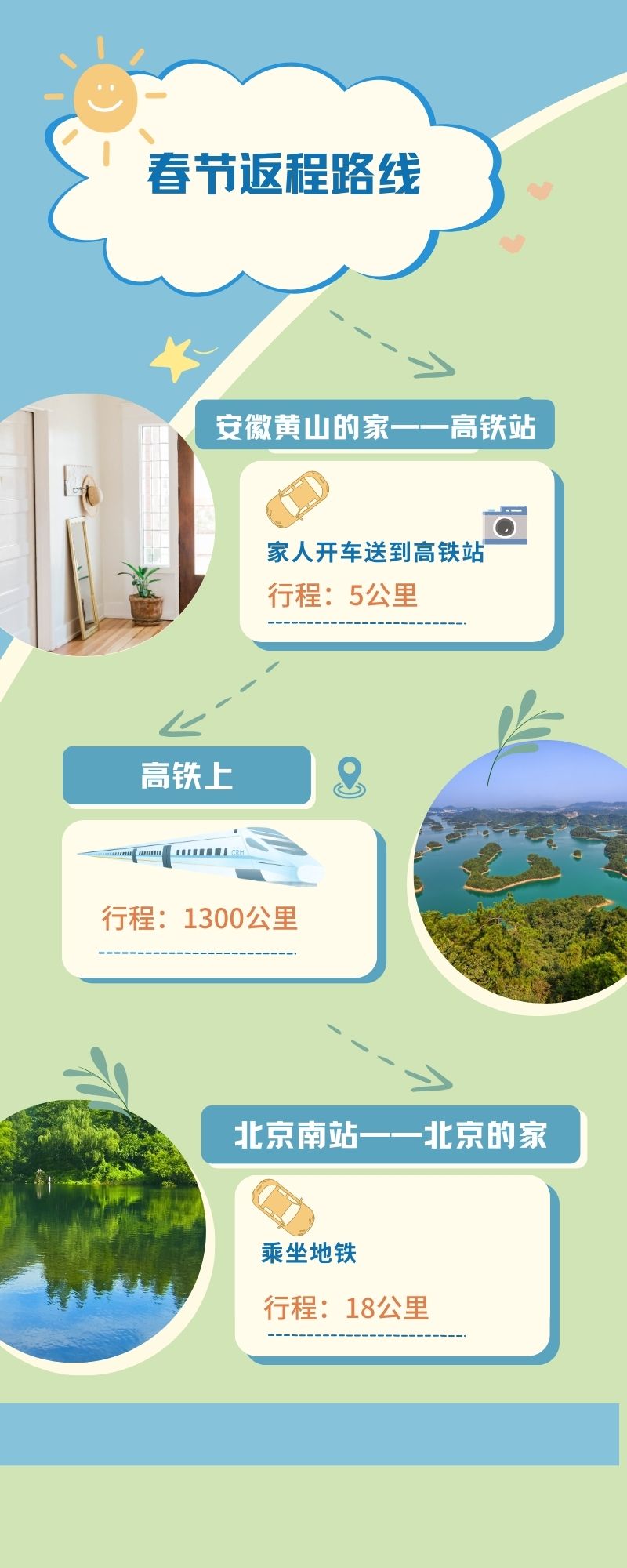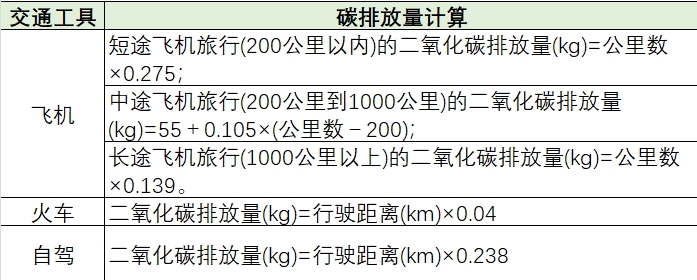How much carbon emissions do Spring Festival trips generate?

Whether it is going home, traveling or returning, it is an important part of the Spring Festival travel. As a member of this travel army and a practitioner of green and low-carbon life, Wang Xiaoqing (pseudonym) has a problem.
She asked reporters: "I want to calculate the carbon emissions of my return trip, how should I calculate it? Is there an authoritative formula?"
Her return route is as follows:
First, it is 5 kilometers to take a bus from home to the high-speed railway station in Huangshan City, Anhui Province, then it is about 1,300 kilometers to Beijing by high-speed train, and finally, it is 18 kilometers to take the subway from Beijing South Railway Station to Beijing's home.

Drawing by Liu Liangwei.
In order to find a more authoritative and scientific calculation method, we have consulted experts from many sources, and here are two methods for your reference. Due to the influence of various factors such as statistical caliber, study year, research object, etc., the calculation results will be different.
First of all, I would like to thank the All-China Environment Federation's Carbon Inclusion Committee for providing us with an authoritative source of formulas. As follows:

Among them, the formula for airplanes and trains comes from the China Climate Change Information Network, and the formula for self-driving comes from the "Beijing Low-Carbon Travel Methodology".
At the same time, Mao Baohua, executive director of the China Comprehensive Transportation Research Center of Beijing Jiaotong University, also provided us with the carbon emission factors of civil aviation and high-speed rail based on his research, as follows:
In 2019, the carbon emission factor of passenger transport during civil aviation flight in China was 95.3gCO2From the perspective of the whole process, the carbon emissions of civil aviation passenger transport are about 108.3gCO2/person-kilometer — 112.9 gCO2/ person-km. From 2017 to 2019, the carbon emission factor of China's high-speed rail traction stage was 24.70 gCO2/person-kilometer — 26.27 gCO2/ person-km. Considering the energy consumption of stations and the emissions of railway maintenance and maintenance, in 2019, the carbon emission factor of the whole process of China's high-speed rail was about 30.48 gCO2/ person-km.
You can calculate the corresponding carbon emissions according to the carbon emission factor.
With these formulas and carbon emission factors, Wang Xiaoqing wanted to calculate it immediately, but soon frowned, he traveled and took the subway, why is there no subway carbon emission calculation method?

It turns out that taking the subway is carbon reduction! That is, in the calculation process, this part is negative.
According to the "2023 China Carbon Inclusive Progress and Corporate Practices" report jointly released by the Energy Research Institute of Tsinghua University and Zhuan Zhuanzhuan, the carbon emission reduction generated by taking the subway is 0.0239 (kgCO2/P.km)。
It dawned on her that this was the case. After calculation, the carbon emission of her trip was about 40.38kgCO2。
In fact, according to the "2023 China Carbon Inclusive Progress and Corporate Practices", in addition to taking the subway, there are many aspects that will produce carbon reduction. For example, riding a shared bicycle, driving a pure electric bus, developing photovoltaic power generation projects, using second-hand mobile phones, using second-hand household appliances, etc., everyone can actively participate.

Source: "2023 China's Carbon Inclusive Progress and Enterprise Practice", Institute of Energy Research, Tsinghua University, Zhuan Zhuan.
Do you understand? Welcome to add some "green" to your life!







